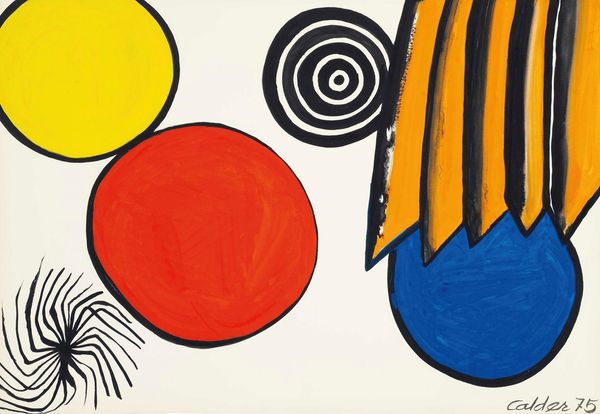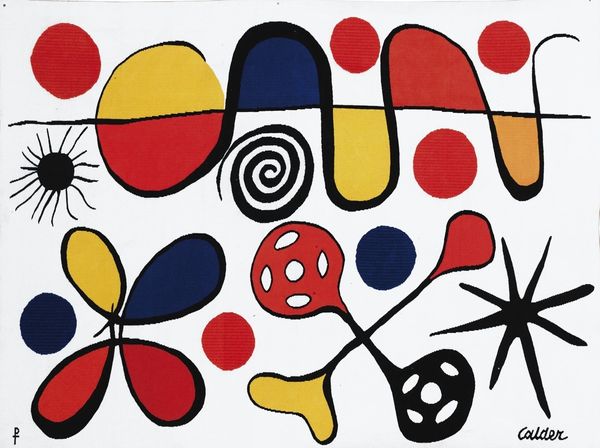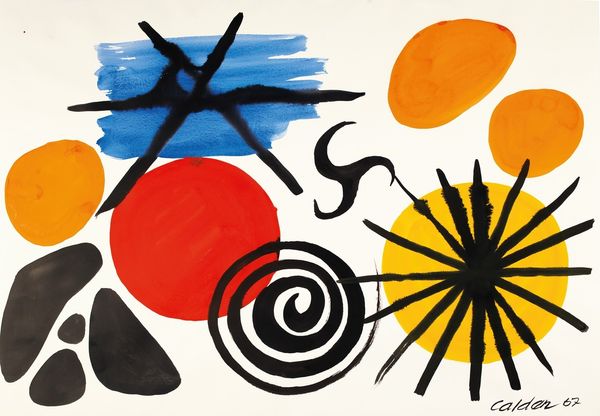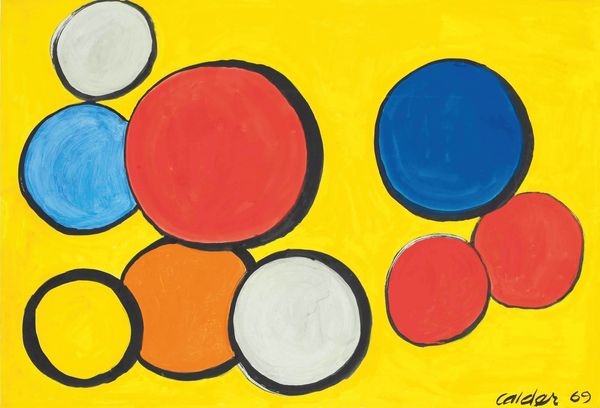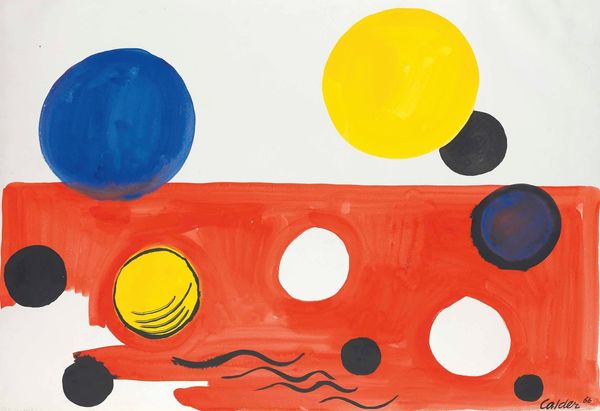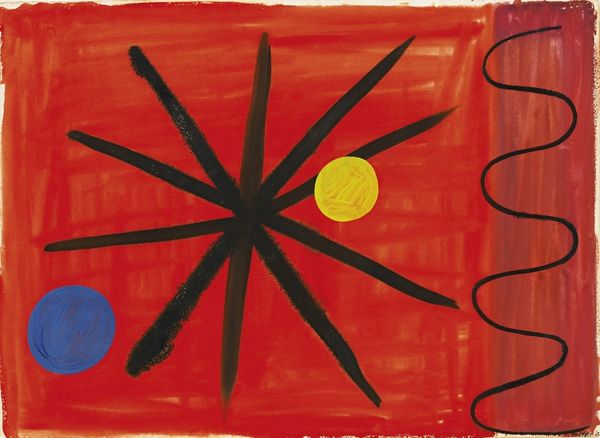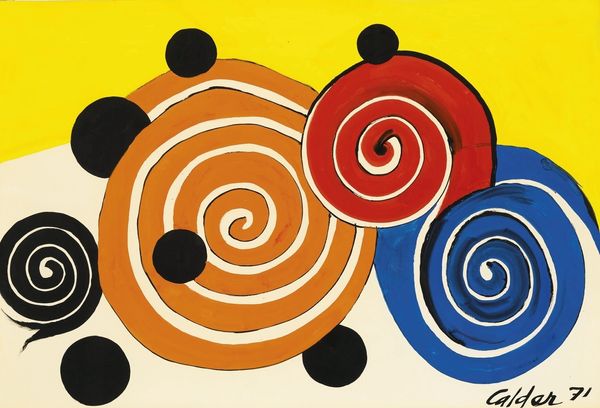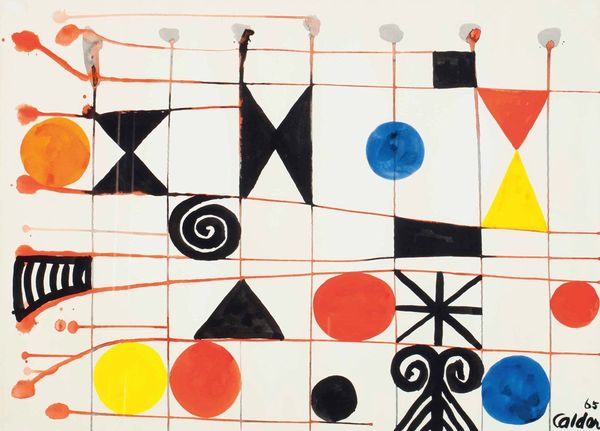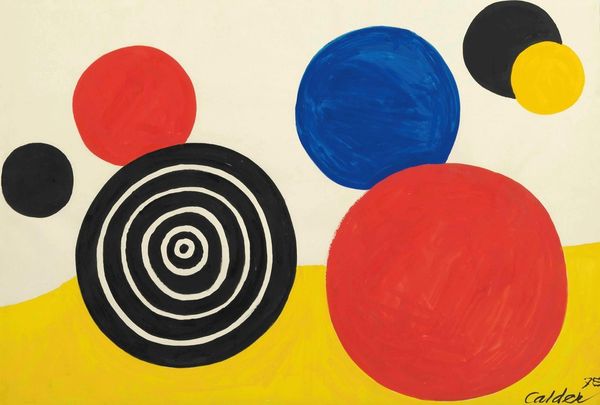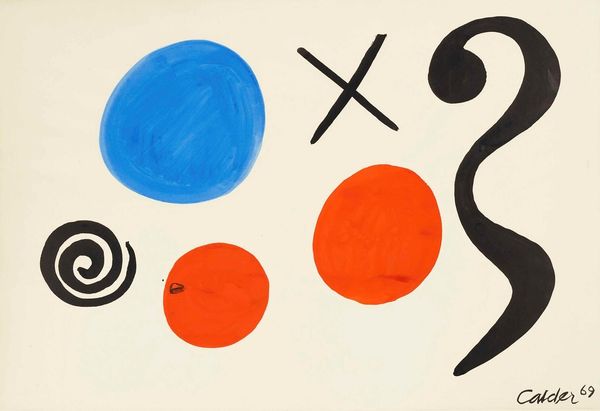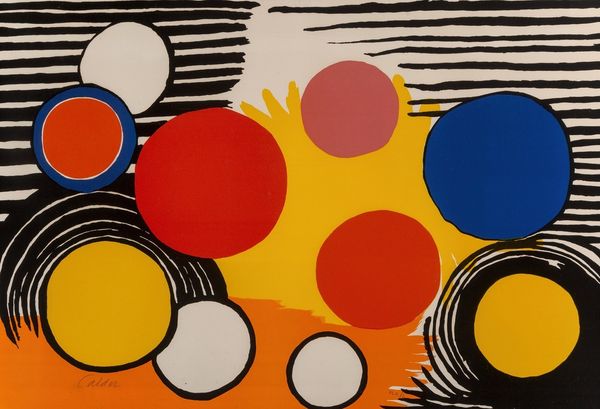
acrylic-paint
#
abstract-expressionism
#
pop art
#
acrylic-paint
#
form
#
geometric
#
abstraction
#
pop-art
#
line
#
modernism
Copyright: Modern Artists: Artvee
Editor: We're looking at Alexander Calder's "Orbs and Crosses," created in 1967 using acrylic paint. It strikes me as quite playful, almost like a child's drawing with its bold shapes and colours. What do you see in this piece? Curator: Beyond its seemingly simple composition, I see a reflection of the sociopolitical currents of the 1960s. Calder, known for his mobiles that defied traditional sculptural form, here flattens and simplifies his visual language. Considering the historical backdrop of the Civil Rights Movement and the Vietnam War protests, does this abstraction hint at a societal unraveling, a questioning of established structures? Editor: That's interesting! I hadn’t considered that at all. I was mainly thinking about the colours and shapes. Curator: The choice of vibrant yellows, reds, and oranges might be seen as a pushback against the perceived greyness of traditional power structures. And those “crosses”, positioned alongside more fluid "orbs”, what societal tensions do you think that they signify, the rigid versus the fluid? The oppressive versus the liberating? Editor: I guess I thought of the crosses more as design elements. But seeing them as symbols of structure makes sense, especially in the context of the era. Curator: Precisely. And how do you interpret his signature appearing so prominently, almost like another element within the composition? Could that be a statement of the artist's identity in the face of cultural upheaval? Editor: So, this isn't just a cheerful abstract piece. It’s loaded with the anxieties and the spirit of the 60s. Curator: Exactly. It’s a reminder that even the seemingly simplest forms can hold profound reflections of their time. Editor: I will definitely look at abstract art with a new perspective from now on!
Comments
No comments
Be the first to comment and join the conversation on the ultimate creative platform.
